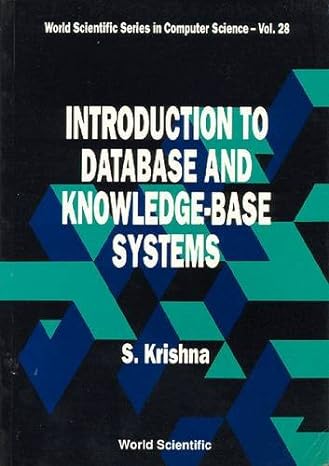Answered step by step
Verified Expert Solution
Question
1 Approved Answer
Solve the following project in R . Solve such that the code function will be able to calculate and plot histogram as output. Project s
Solve the following project in R Solve such that the code function will be able to calculate and plot histogram as output.
Projects description
This is a little fun project, and short, too. The project aims to define a class that allows the creation of new probability distributions based on existing ones. The solution needs to be a S class named randomVariate. The constructor of the class must accept two arguments. The first one, named distFormula, should be a formula, eg ~ x y describing the function of one or more random variables. The second argument, named defs, should be a list of functions used for sampling from given distributions with keys corresponding to symbols used in the formula. The created object of the class randomVariate should be a function used for sampling from the distribution defined by the formula. You should also write the print method specific to this class. The following examples should clarify the concept.
Example
Let's start with a simple example. Let
be a standard normal random variable
The function used for sampling from this distribution in the R language is rnorm Suppose we want to define a new random variable
based on the random variable
Specifically, we want a function that allows for generating random numbers for this new random variable
We can define this new function using the constructor of the class randomVariate as follows.
### definition of the new variable
newDist randomVariate
distFormula ~ x
defs list
x rnorm
In the above snippet, we defined a new random variable
We used the constructor of the class randomVariate. The first argument of the constructor is a formula describing the function of the random variable
The second argument is a list defining the distribution of the random variable
Here, it is a standard normal distribution. The constructor creates a new object of the class randomVariate. We can print it out to see the mathematical definition of this new object.
newDist
output:
Formula
~x
Definitions
x
function n mean sd
CallCrnorm, n mean, sd
The object is printed in a specific way. First, a formula is printed, and then all used definitions. Here, there is only one definition for the symbol x In this particular case, the definition is a function rnorm which is just a call to a compiled function Crnorm
We can use the new object as a regular function to sample random numbers from the new distribution. The following snippet creates a random sample and plots a histogram based on the sample.
sample newDist
histsample breaks "Scott", probability TRUE,
col rgb density angle
lines
densitysample adjust
col rgb
The above snippet generates the following graph. The new variable takes only nonnegative values.
Step by Step Solution
There are 3 Steps involved in it
Step: 1

Get Instant Access to Expert-Tailored Solutions
See step-by-step solutions with expert insights and AI powered tools for academic success
Step: 2

Step: 3

Ace Your Homework with AI
Get the answers you need in no time with our AI-driven, step-by-step assistance
Get Started


